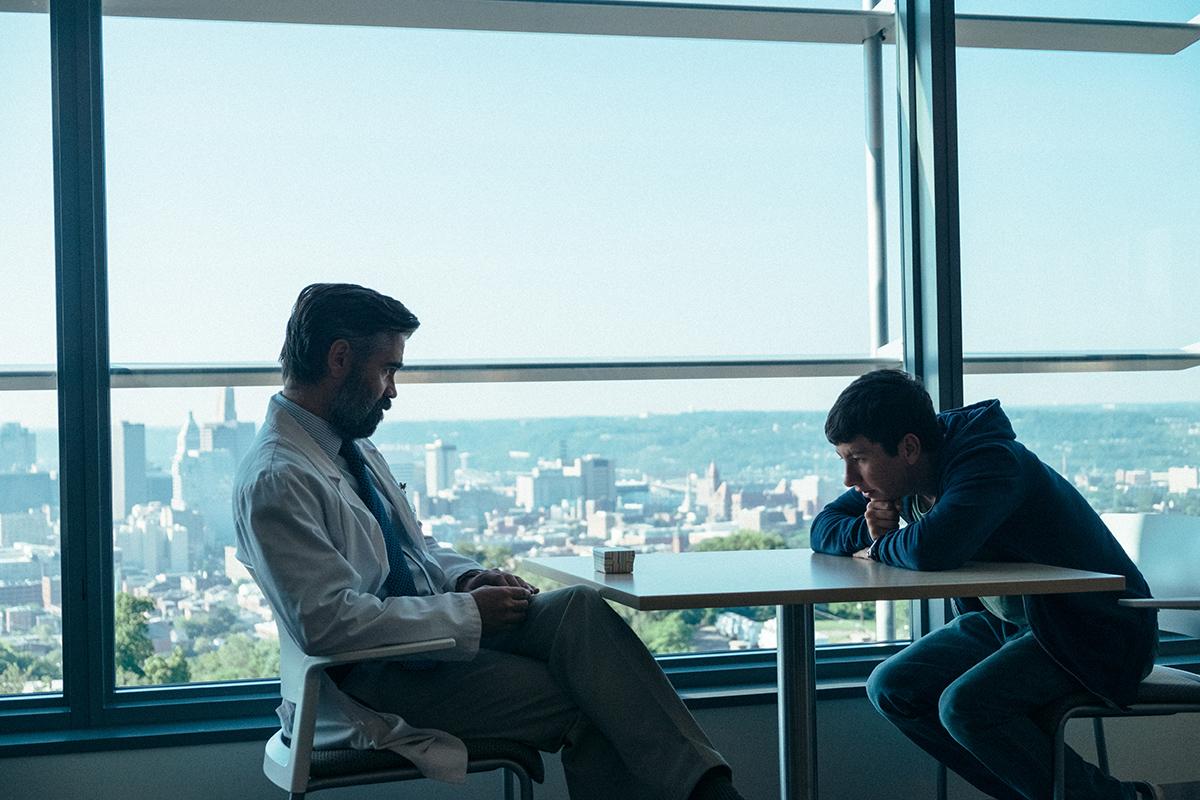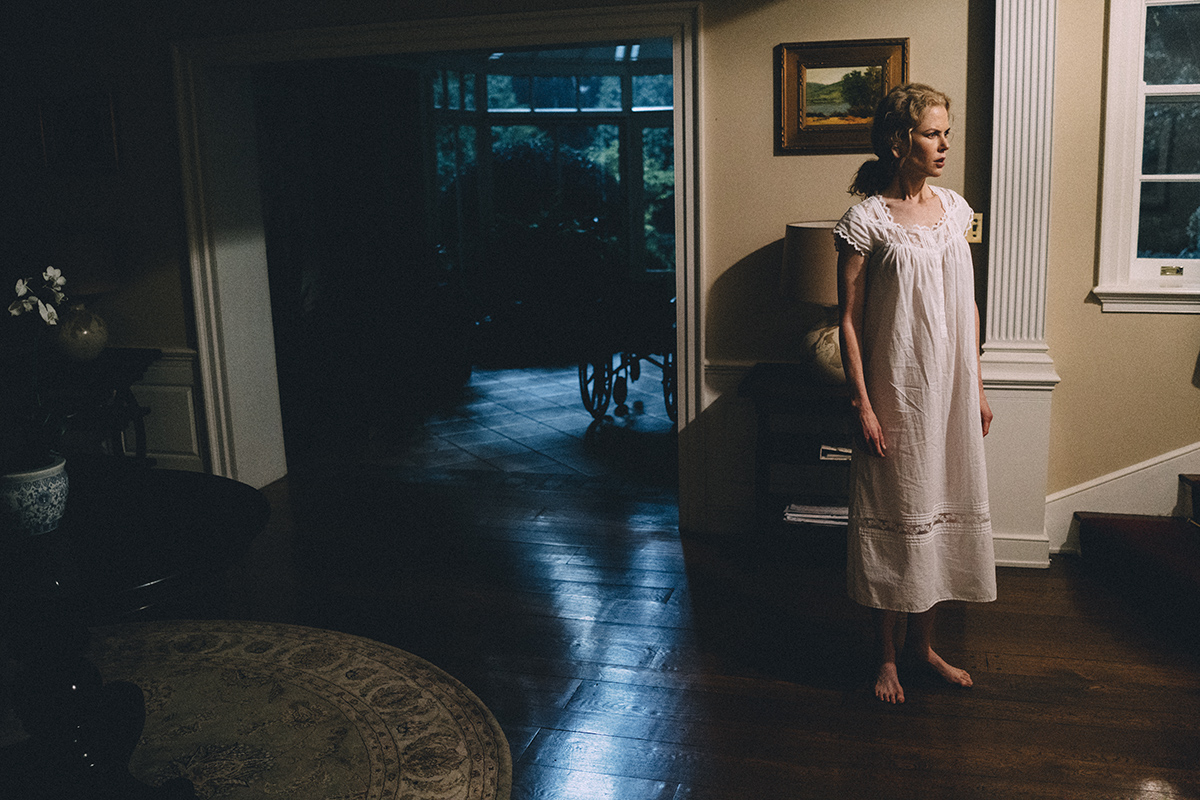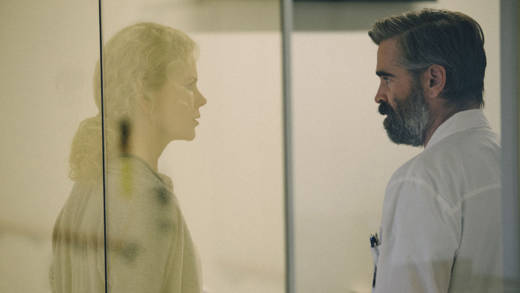The dramatic weight of what’s shown on screen in The Killing of a Sacred Deer is equal to what director Yorgos Lanthimos withholds. Having established his ability to disguise ancient tragedy in contemporary clothing with his first English-language film The Lobster (2015), the Greek director’s mise en scène is even more assured here. Sacred Deer convicts its hero, Dr. Steven Murphy (Colin Farrell), three years before the film even begins. How his punishment is meted out is what differentiates a Lanthimos film from ordinary films within the thriller genre.
Steven is a heart surgeon who shares a comfortable house in the Cincinnati suburbs with his nuclear family. His wife Anna (Nicole Kidman) is an ophthalmologist fretting over plans to redecorate her office. Kim (Raffey Cassidy) and Bob (Sunny Suljic) are their beautiful, healthy children. Their shared, if latent, dysfunction manifests itself upon the arrival of an older teenage boy named Martin (Barry Keoghan) who insinuates himself into their lives.

Martin’s pockmarked face is red with pimples. His head and neck are in constant motion — they circle and shake, ever tremulous. He can’t keep his demons still. At first glance, Steven’s connection with this weird, angry boy appears to be inappropriate (they meet in parking lots and a dimly lit diner). Even after we see the Murphys eating together at their dinner table, it’s unclear whether or not Martin is Steven’s illegitimate son or something else implicitly untoward.
Lanthimos expertly creates room on screen for these psychological gray areas to thrive. Like a modern-day oracle, the director is communicating a message to the audience from some troubled god, yet he refuses to explain away our uncertainty. The director is only willing to give us glimpses inside the Murphys’ domestic routine and the resultant anomie. We’re meant to draw our own conclusions from scenes like the one in which the Drs. Murphy play a pre-coital game called “general anesthesia.”
As an imperious yet helpless mother, Kidman allows a breathtaking ugliness into her performance. It saturates the character’s facial expressions that well up from whatever’s left of her soul. She’s exquisite as a woman who’s grown complicit in and compliant with her husband’s moral decline.

But this is, by and large, Farrell’s film, and his second with Lanthimos after The Lobster. His Dr. Murphy hides his features with a full beard and mustache. He’s ashamed of looking anyone in the eyes for long, if he will at all. At 41, Farrell’s youthful bravado is gone. It’s been replaced by something better — his willingness to embody human failure.



